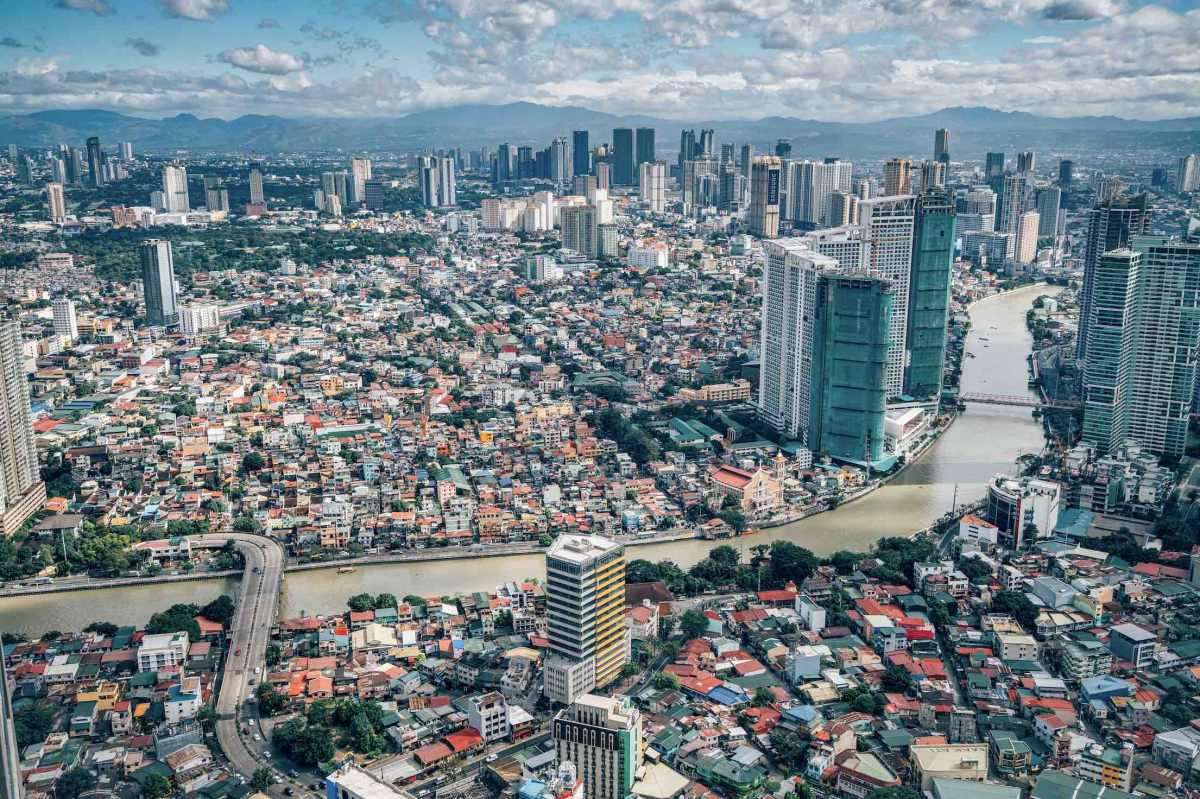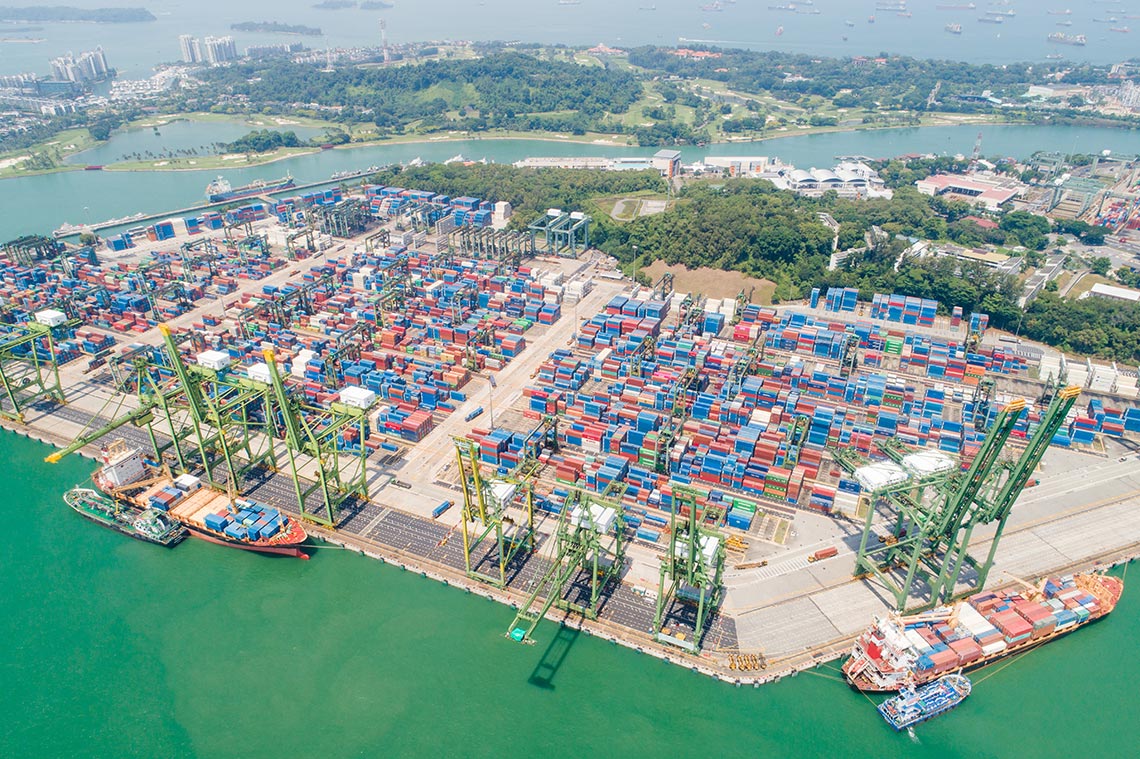Marktonderzoek in de Filipijnen

The Philippines is one of the most important countries in Southeast Asia. It has always been a confluence of East and West, as reflected in its varied cultural influences, languages, and economic ties. With a population pushing past the 100 million mark and an economy that’s shown consistent growth in the past decades, the Philippines presents an enticing prospect for businesses globally.
… But to make the most of these opportunities, it’s vital to undertake market research in the Philippines, given the nation’s unique socio-cultural dynamics and diverse regional markets.
What Are the Benefits of Conducting Market Research in the Philippines?
Executing thorough market research in the Philippines offers an array of advantages for businesses aiming to establish or expand their footprint in this vibrant Southeast Asian market. These benefits include:
• Risicobeperking: Awareness of local challenges, potential regulatory hurdles, and market dynamics helps businesses make informed decisions, thereby reducing the risks associated with entering a new market. By understanding Filipino consumer behaviors, companies can craft marketing campaigns that resonate more deeply, ensuring a higher ROI.
• Product Localization: The Philippines often requires product tweaks to meet local tastes and preferences. Market research facilitates this localization process. By understanding the local consumers’ values, preferences, and pain points, businesses can foster deeper relationships and loyalty.
• Informed Investment Decisions: Investors can assess the viability of various sectors, identify emerging industries, and determine potential returns based on comprehensive market insights. Insights derived from market research empower businesses with a clearer understanding of the competitive landscape, enabling them to identify gaps and seize opportunities.
• Future Growth Forecasting: By identifying trends and understanding the evolving market dynamics, businesses can anticipate future growth areas and adjust their strategies accordingly.
Key Industries in the Philippines
The Philippines boasts a dynamic economic landscape with several growing industries. These are some of the main industries to consider when conducting market research in the Philippines:
• Business Process Outsourcing (BPO): The Philippines is one of the global leaders in the BPO sector, providing services ranging from customer support and back-office tasks to high-end services like analytics, software development, and financial advisory.
• Landbouw: As a tropical country, the Philippines has a strong agricultural sector, with major products including rice, sugarcane, coconuts, bananas, and pineapples. It’s one of the world’s top coconut oil producers according to market research in the Philippines.
• Toerisme: With its pristine beaches, scenic landscapes, and rich history, tourism is a significant contributor to the Philippine economy. Popular destinations like Boracay, Palawan, and Cebu draw millions of international tourists yearly.
• Onroerend goed en bouw: The growth in the BPO sector and the increasing urbanization have fueled demand for residential and commercial properties, leading to a surge in the real estate and construction industries.
• Mining and Natural Resources: The Philippines is rich in mineral resources, with significant deposits of gold, nickel, copper, and chromite. However, this industry faces environmental and regulatory challenges that businesses can overcome with market research in the Philippines.
• Finance and Banking: With increasing financial inclusion, innovations like digital banking, and remittances from Overseas Filipino Workers, the finance and banking sector remains robust.
Main Tourist Attractions and Cities in the Philippines

When it comes to market research in the Philippines in the realm of tourism, it’s undeniable that the country has carved out a reputation as one of the world’s most desired travel destinations. Let’s explore some of the main tourist places that have put the Philippines on the global travel map:
• Boracay: Known for its powdery white-sand beaches and vibrant nightlife, Boracay is a tropical paradise for both relaxation and entertainment. After a brief closure for environmental rehabilitation, the island reopened with stricter regulations to ensure sustainable tourism.
• Palawan: Often regarded as the “Last Frontier” of the Philippines, Palawan offers breathtaking landscapes, from the turquoise waters of El Nido to the underground river in Puerto Princesa, a UNESCO World Heritage Site.
• Cebu: Beyond its urban allure, Cebu boasts historical sites, waterfalls, and white sand beaches. It’s also the gateway to neighboring attractions like the sardine run in Moalboal and the whale sharks of Oslob.
• Manila: The capital city presents a mix of the old and the new, with sites like Intramuros, Rizal Park, and contemporary malls and entertainment hubs.
• Vigan: A UNESCO World Heritage Site, Vigan is a testament to the Philippines’ colonial history, with well-preserved Spanish-era structures and cobblestone streets.
Onze huidige marktbeoordeling en aanbevelingen
We believe that the Philippines offers a diverse and dynamic market with significant potential for growth, particularly in industries such as business process outsourcing (BPO), technology, and tourism. The country’s young and tech-savvy population, combined with its strategic location in Southeast Asia, makes it an attractive destination for businesses looking to expand. We recommend conducting thorough market research in the Philippines to understand the various consumer behaviors and industry trends that can help guide your business decisions.
One of the Philippines’ unique features is its strong emphasis on the service sector, particularly BPO and remittances from overseas workers. These sectors play a critical role in the country’s economy and provide substantial opportunities for foreign and local businesses alike. We recommend focusing on regions such as Metro Manila and Cebu, where infrastructure is well-developed and opportunities for BPO and tech companies are abundant. Market research in the Philippines will help you identify the best areas to invest in and understand how consumer demands vary across regions.
Voordelen en sterke punten in de markt
The Philippines has one of the largest global markets, with a growing middle class and one of Southeast Asia’s youngest populations. A high percentage of its people are under the age of 20. Approximately 90% of Filipinos are functionally literate. The robust consumer demand and impressive labor market support the country’s dynamic economy. The Philippines market shows its strength through the energy franchise and the transportation, infrastructure, ICT, and health industries.
Mogelijkheden
Businesses that embrace the intricacies and opportunities presented by market research in the Philippines stand to gain significantly. Here are some of the compelling opportunities:
• Untapped Markets: Despite its growing economy, there are many niche markets in the Philippines that remain underserved. Market research in the Philippines can unveil these hidden opportunities, allowing businesses to introduce innovative products or services.
• Digital Transformation Insights: As the Philippines undergoes a digital revolution, businesses can study and adapt to the evolving digital consumption habits, preferences, and concerns of the local market.
• E-commerce Growth: As more Filipinos turn to online shopping, there’s a substantial opportunity for businesses to analyze e-commerce trends and optimize their online presence.
• Regional Specifics: Given the geographic spread of the Philippines, regional market research can lead to the identification of specific needs, preferences, and opportunities in different parts of the country.
• Innovation and Product Development: By identifying gaps in the market, businesses can drive innovation, creating products or services that cater to the unique demands of the Filipino population.
Uitdagingen
While market research in the Philippines can unearth numerous opportunities, it’s also important to recognize the challenges that businesses might face:
• Bureaucracy and Regulation: The Philippines has been known for its bureaucratic processes which can sometimes be time-consuming for businesses, especially for those unfamiliar with the local regulatory landscape.
• Infrastructure Bottlenecks: Despite improvements, certain parts of the Philippines still grapple with infrastructural issues, impacting transportation, logistics, and connectivity.
• Cultural Diversity: Cultural and linguistic diversity, while an asset, can also be a challenge for businesses attempting to create a universally appealing product or message.
• Internet Connectivity: Even as digital transformation is on the rise, some regions still suffer from inconsistent or slow internet connectivity, which can hamper digital ventures.
• Consumer Price Sensitivity: The Filipino market, while vast, is also price-sensitive. Balancing quality with affordability is key to winning consumer trust.
• Skill Gaps: While the country has a young and educated workforce, there can be skill gaps in certain sectors, necessitating training and development initiatives.
Consumentenbasis

Filipinos tend to devote their money to products with which they are familiar. Because of this, they are a great market. Social media also serves as a significant influence on the consumer. This online activity serves as a connection. It’s the bridge between the Philippines and the outside world. This link is what the foreign market needs. Foreign influence and trends help to predict consumer behavior. Many consider The Philippines to be a melting pot. It consists of many cultures, races, and people. With such individuality, there is no weak consumer base for any sector or industry.
Emerging Trends in Market Research in the Philippines
When delving into market research in the Philippines, it’s imperative to acknowledge the evolving dynamics and trends influencing the field in the country. Some of the most notable trends include:
• Digital Dominance: With the Philippines being one of the top countries in terms of social media usage, digital platforms have become crucial for market research in the Philippines. Online surveys, social media analytics, and web traffic insights offer a wealth of information about consumer behavior.
• Qualitative Online Research: Beyond traditional face-to-face focus groups, there’s a growing emphasis on online qualitative methods like virtual focus groups, online communities, and in-depth online interviews.
• Sustainability Insights: With rising awareness about environmental concerns, there’s growing interest in researching consumer attitudes towards sustainability, eco-friendly products, and corporate social responsibility.
• E-commerce Evaluation: The rise of online shopping platforms like Lazada, Shopee, and Zalora has shifted the attention toward studying e-commerce trends, consumer purchase patterns, and online buying behavior.
• Ethnographic Research: To delve deeper into the Filipino way of life, ethnographic studies, where researchers immerse themselves in the local culture, are gaining prominence.
SWOT Analysis of the Philippines Market
Sterke punten:
- Young and Tech-Savvy Population: The Philippines has a large, youthful population that is highly adaptable to technology, making it an attractive market for tech-driven businesses. This provides a strong foundation for industries such as e-commerce, telecommunications, and digital services.
- Growing BPO Industry: The Philippines is a global leader in BPO. The country’s skilled, English-speaking workforce and competitive labor costs make it a top destination for outsourcing services, offering a significant opportunity for companies in this sector.
- Strategic Geographic Location: The Philippines offers businesses a gateway to other fast-growing markets in the region, making it a favorable base for regional operations.
Zwakke punten:
- Infrastructuur uitdagingen: While major cities like Metro Manila and Cebu are well-developed, many parts of the country still face infrastructure issues, particularly in transportation and logistics, which can hamper business expansion and operations.
- Regelgevende complexiteit: The Philippines’ regulatory environment can be unpredictable, with bureaucratic hurdles that may delay business processes. Navigating foreign investment rules and compliance can be a challenge for new entrants.
- Inkomensongelijkheid: Despite economic growth, income inequality remains a concern. This can create disparities in consumer demand across different regions and socioeconomic groups.
Mogelijkheden:
- Rising Middle Class: The Philippines has a rapidly growing middle class with increasing purchasing power, presenting opportunities for businesses in retail, real estate, and consumer goods. Market research in the Philippines can help businesses understand the needs and preferences of this expanding demographic.
- Toerisme: With its stunning natural landscapes and vibrant culture, the Philippines is a top destination for tourists. There is significant potential for investment in hospitality, tourism services, and eco-tourism, particularly as the industry rebounds post-pandemic.
- Hernieuwbare energie: The government is focused on developing renewable energy sources to meet growing demand and sustainability goals. This presents opportunities for companies involved in solar, wind, and geothermal energy projects.
Bedreigingen:
- Politieke instabiliteit: While the Philippines has seen growth and modernization, political changes and instability remain a concern, potentially affecting business regulations and investment climates.
- Natuurrampen: The Philippines is prone to typhoons, earthquakes, and volcanic activity, which can disrupt business operations and infrastructure. Businesses need contingency plans to mitigate these risks.
- Global Competition: With globalization, the Philippines faces increasing competition from other emerging markets in Southeast Asia, particularly in industries like BPO and manufacturing. Companies need to continually innovate to maintain competitiveness.
How The Philippines is a Gateway to Southeast Asia

The Philippines is a gateway to the East Asian Economies. The archipelago lies at the crossroads of Eastern and Western business. The name “gateway to Southeast Asia” is significant. It comes from the relationship the Philippines has with America. The Philippines is a critical entry point for over 400 million people in the ASEAN. It is also a gateway for international shipping and investments. A large number of people make their way through the Philippines each year. Thus, over 20 different airlines service the country. The Philippines benefit most from American and European businesses. These airlines support that trade.
How SIS International’s Market Research in the Philippines Helps Businesses
SIS Internationaal’s market research in the Philippines provides businesses with crucial insights to thrive in this dynamic and evolving market. Our research services offer several key benefits, including:
- Uitgebreide marktinzichten: We provide detailed reports on consumer behavior, market trends, and competitive landscapes, allowing businesses to make data-driven decisions that align with the realities of the Philippine market.
- Risicobeoordeling en -beperking: We understand the challenges specific to the Philippines, including infrastructure limitations and regulatory hurdles. We deliver actionable strategies to mitigate risks and navigate the local business environment effectively.
- Op maat gemaakte bedrijfsstrategieën: SIS International’s market research in the Philippines helps businesses create customized strategies that resonate with local consumers and adapt to regional differences, ensuring market entry or expansion is successful.
- Concurrentieanalyse: We offer in-depth analysis of key industry players and emerging competitors, giving businesses the tools to position themselves strategically and capitalize on growth opportunities in the Philippines.
- Identificatie van groeimogelijkheden: Our research highlights emerging industries and sectors, such as renewable energy and technology, guiding businesses toward high-potential investment areas.
Over SIS Internationaal
SIS Internationaal biedt kwantitatief, kwalitatief en strategisch onderzoek. Wij bieden data, tools, strategieën, rapporten en inzichten voor besluitvorming. Wij voeren ook interviews, enquêtes, focusgroepen en andere marktonderzoeksmethoden en -benaderingen uit. Neem contact met ons op voor uw volgende marktonderzoeksproject.



